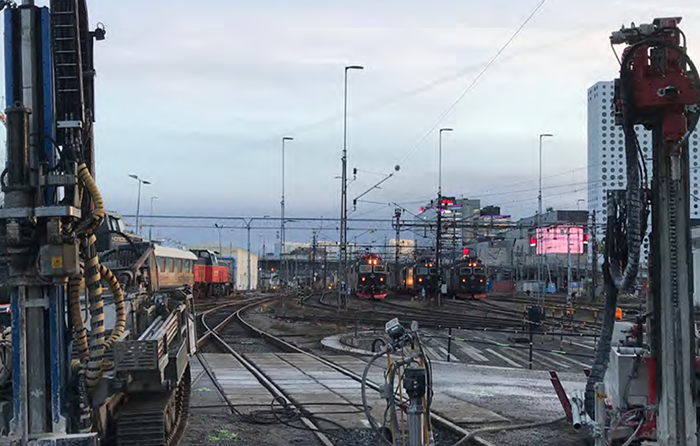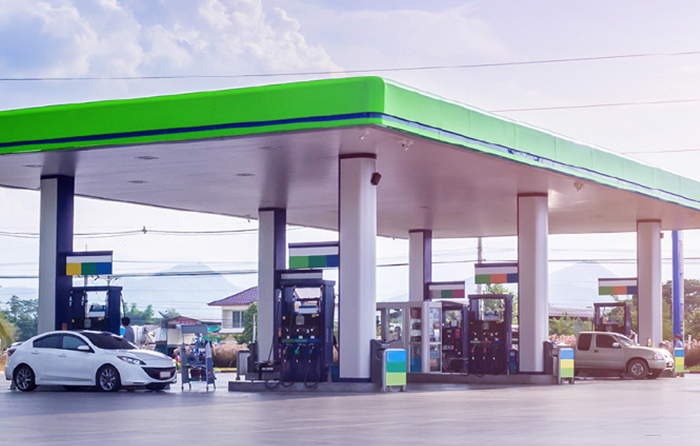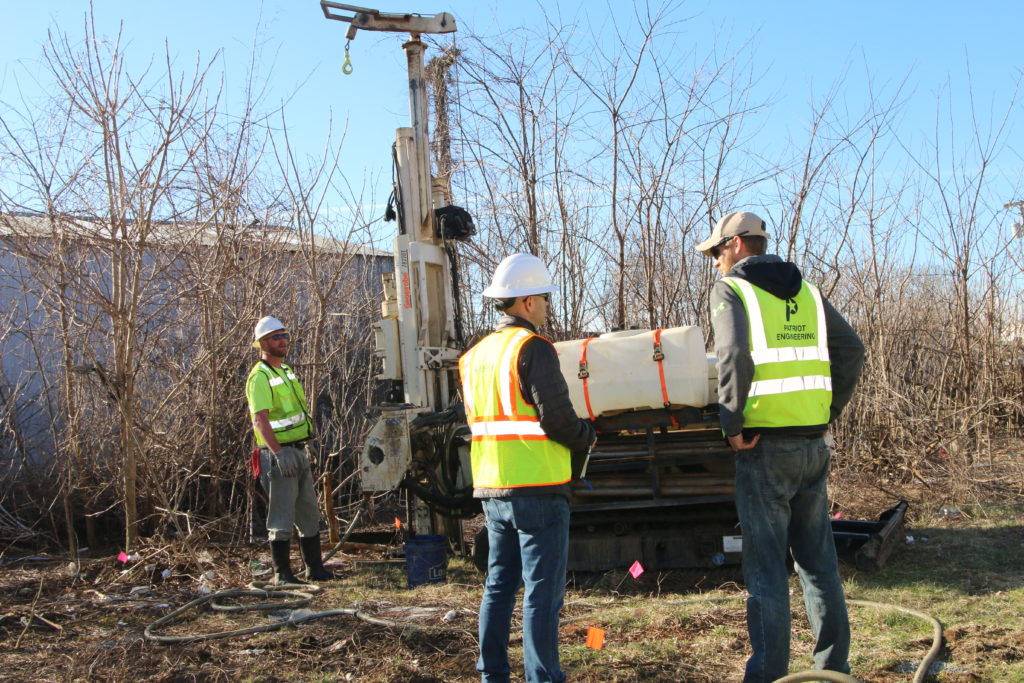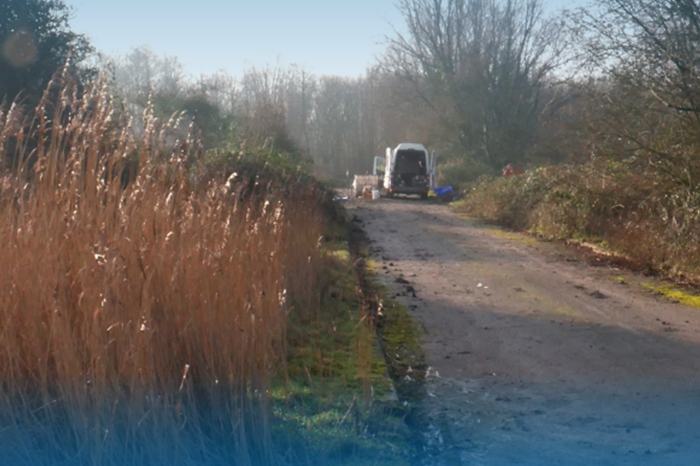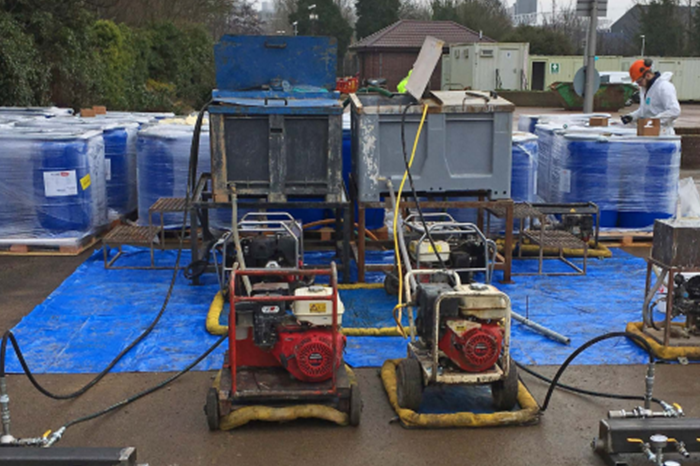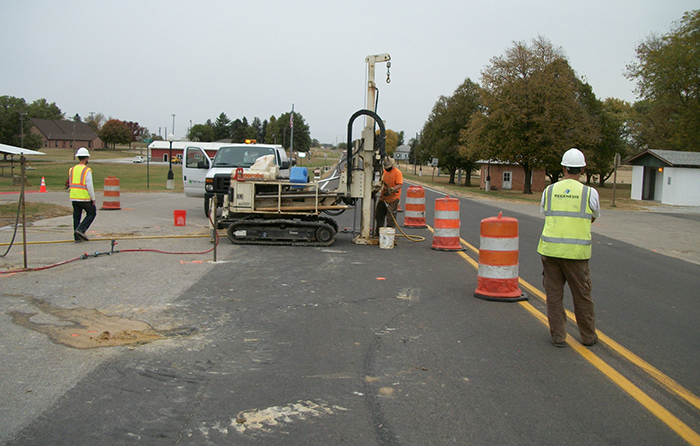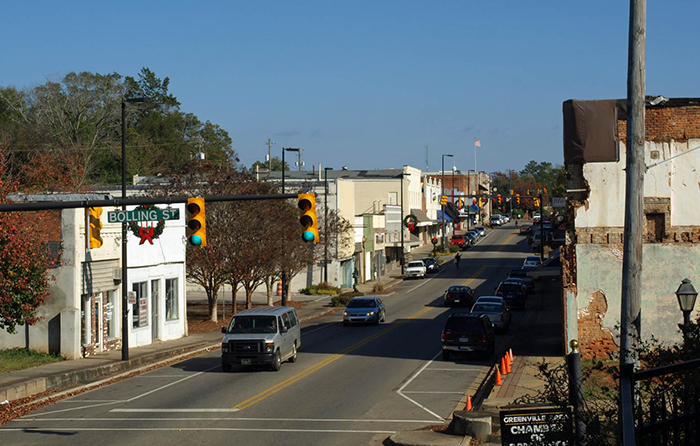>99% Contaminant Reduction at Largest Train Maintenance Depot in Northern Europe
Case study highlights:
- Carefully designed integrated remediation strategy used physical, chemical, sorptive and biological treatment
- Innovative use of PetroFix Permeable Reactive Barriers (PRBs) completed to prevent residual contaminant egress from outside of the treatment area and protect against future spills
- Significant reductions of petroleum hydrocarbons have been achieved onsite – starting with LNAPL and reaching stringent target values – within nine months
This case study reviews the in situ remediation strategy implemented across the largest train maintenance depot in northern Europe, located in Hagalund, Sweden. As part of the remedial application, Swedish remediation contractor Envytech installed a network of additional monitoring wells across the site. This was done to better delineate the plume and identify any unknown contamination prior to commencement of remediation. Site investigations identified LNAPL across much of the northern area of the site, which required a revised groundwater remediation strategy.
Injectable Permeable Reactive Barrier Stops MTBE and Benzene Plume
Case study highlights:
- Pilot test proves injectable permeable reactive barrier (i-PRB) successful at reducing MTBE and benzene
- Technologies used: PlumeStop and ORC Advanced
- Monitoring data includes sampling event at 27 months post-injection
- Full-scale treatment scheduled
Fuel losses at a former petrol filling station in western Belgium, had resulted in the contamination of soil and groundwater with petroleum hydrocarbons and oxygenate additives. During the decommissioning of the site the source area was remediated, however a residual groundwater plume was left in place. Having taken over the site from the previous owner, OVAM determined that this plume represented a potential environmental and human health risk. OVAM required active remediation to take place and Group Van Vooren worked with REGENESIS to develop a suitable strategy. Read the case study to learn more about this site, the remediation approach taken and the results achieved from the pilot test.
No Further Action Achieved at Gas Station Site
Case study highlights:
- Collaboration between PPM Consultants and REGENESIS resulted in substantial cost savings while achieving the no further action goal
- REGENESIS Remediation Services implemented a highly-controlled injection program
- Following the application and subsequent monitoring, the treatment objective was met
This case study reviews a gasoline service station near the Mississippi River in central-eastern Louisiana that was contaminated with petroleum hydrocarbons (PHCs) detected in soil and groundwater. Further investigation phases were performed to define the magnitude and extent of the PHC plume, confined to predominantly fine-grained soils (i.e., silt and clay) in the upper 15 feet below ground surface (bgs). In 2015, PPM Consultants, Inc. (PPM) submitted a Corrective Action Plan (CAP) to the Louisiana Department of Environmental Quality (LDEQ) to remediate benzene (i.e., the primary PHC of concern), in soil and groundwater. In the CAP, PPM proposed an in situ chemical oxidation (ISCO) and aerobic bioremediation treatment approach utilizing PersulfOx® and ORC Advanced®. The ISCO to bio treatment approach was nearly 50% more cost-effective than the installation of either dual-phase extraction or ozone sparging systems, two possible approaches considered by PPM prior to determining the final remedy.
PetroFix Pilot Study Leads To Successful Full-Scale Application
Case study highlights:
- Previous pilot testing results provided promising results leading to a full-scale application
- PetroFix is designed to remediate petroleum contamination completely at the lowest total cost to closure
- Site closure strategy included reducing groundwater concentrations, inhibiting plume migration, and demonstrating plume stability site-wide
This case study reviews a full-scale PetroFix remediation program that was designed and implemented at seven locations to treat petroleum hydrocarbons (PHCs) following a successful field pilot test.
Two post-injection groundwater sampling events were completed in June and September 2019. In December 2019, a supplemental PetroFix injection was completed in the PHC source area onsite following the PersulfOx and ORC-A pretreatment step and groundwater equilibration. Additionally, a new treatment area was added where a small quantity of PetroFix was injected.
First Application of PetroFix at Petrol Filling Station in Sweden
Case study highlights:
- The integrated remediation treatment strategy ensured that optimum treatment efficiency was maintained throughout the phases of works
- The amount of excavation and offsite disposal was minimized
- All underground infrastructure remained in situ
- All works were completed at an active petrol filling station with minimal disruption to the commercial operations of the facility
- 12-month period monitoring results show reductions of >98% of the gasoline range of petroleum hydrocarbon concentrations in the groundwater
RGS Nordic was asked by Circle K to remediate groundwater contaminated with gasoline at an active Petrol Filling Station (PFS) in Nykvarn, Sweden. During the site investigation, petroleum hydrocarbon contamination was identified within the fill material around the underground storage tank (UST) farm.RGS Nordic was required to deliver a remediation strategy that posed minimal disruption to the commercial operations of the PFS. The chosen remediation strategy combined targeted excavation, in situ chemical oxidation (ISCO), in situ sorption, and enhanced aerobic biodegradation using a range of complementary REGENESIS technologies: RegenOx®, ORC-Advanced® and PetroFix®.
In situ treatment of MNT, DNT and TNT at former explosives factory
In Situ reagent barriers (HRC) treat contaminated groundwater in sandstone under a schoolRead More
Performance-Based Objectives Achieved at Scott AFB
Case study highlights:
- Impacted soil was caused by leaking underground piping and removal of two large UST’s
- Second round of direct push injections included PetroFix to treat lingering BTEX
- One month following application of PetroFix, BTEX levels were at non-detect and have continued to remain at that level for 5 sampling events
This case study reviews the Corrective Action Plan (CAP) at Scott Air Force Base, a large military base located in Southwestern Illinois that was contaminated with petroleum impacted soil. One month following the application of PetroFix™, contaminant levels reached non-detect. Benzene continued to remain non-detect through March 2020 and the site was recommended for no further action. The final CAP Addendum proposed two rounds of groundwater treatment by injection at Former Tank 85 to reduce benzene concentrations below the groundwater remediation objectives. The first round of injections was completed in February through March 2018 and consisted of the use of REGENESIS’ RegenOx®, coupled with ORC Advanced® to stimulate aerobic bioremediation. The initial injection was successful in reducing most contaminants within the affected area. The second round of injections at the former UST was completed in March 2019 using REGENESIS’ PetroFix micron-scale remedial fluid.
Pesticides, VOCs and petroleum hydrocarbons remediated with a suite of in situ technologies
In Situ reagent barriers (HRC) treat contaminated groundwater in sandstone under a schoolRead More
Petroleum Hydrocarbon Plume Treated to Non-Detect within 50 Days
Case study highlights:
- Thorough Design Verification Testing (DVT) program helped to create a unique design for effectively treating the contaminant plume.
- Cost-effective design and application required a single application event.
- The remedial approach successfully treated a 200 ft. long dissolved phase hydrocarbon plume within the first 50 days.
This case study reviews an active gas station in Nebraska that was adversely impacted by a dissolved‑phase, hydrocarbon plume. The treatment solution from REGENESIS was successful in reducing the concentrations of BTEX, TPH-G, and MTBE to non-detect levels. REGENESIS conducted a thorough and innovative DVT program prior to remediation in order to ensure an effective remedial design. They used the DVT to produce a design which fit the precise needs of the site as well as the client’s budget. After the successful treatment, the consultant continued to monitor the groundwater trends until the Nebraska Department of Environment and Energy (NDEE) granted the site closure status. The on-site gas station has remained open for business.
Innovative Approach Reduces Benzene To Achieve Closure
Case study highlights:
- Exceptional benzene reduction using PersfulOx quickly reduced contaminant levels within a short timeframe.
- Design Verification Testing (DVT) fine-tuned the application to increase effectiveness.
- Addition of PlumeStop application ensured against back diffusion to help reach site closure.
This case study reviews a gas station site in Greenville, Alabama where petroleum hydrocarbon contamination was present in the subsurface for decades. PersulfOx, PlumeStop, and ORC Advanced were applied to quickly reduce benzene levels to non-detect, resulting in successful regulatory closure. This site is part of an environmental liability transfer and Antea Group®, an international engineering and environmental consulting firm, assumed the liability for this site. Antea Group required an effective remedial solution that would result in rapid site closure. Antea Group partnered with REGENESIS® to create a remedial design using an in situ chemical oxidation (ISCO) treatment paired with an aerobic bioremediation technology to ensure a complete treatment of this site.

 Americas
Americas Europe
Europe Français
Français Deutsch
Deutsch Italiano
Italiano Español
Español